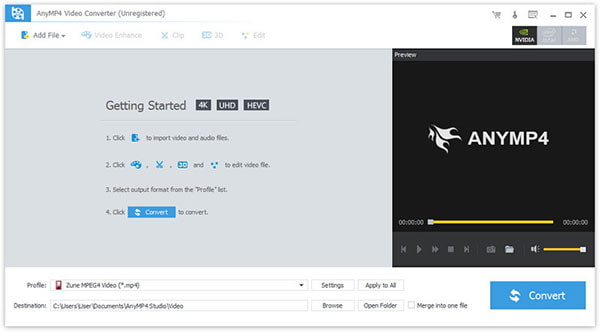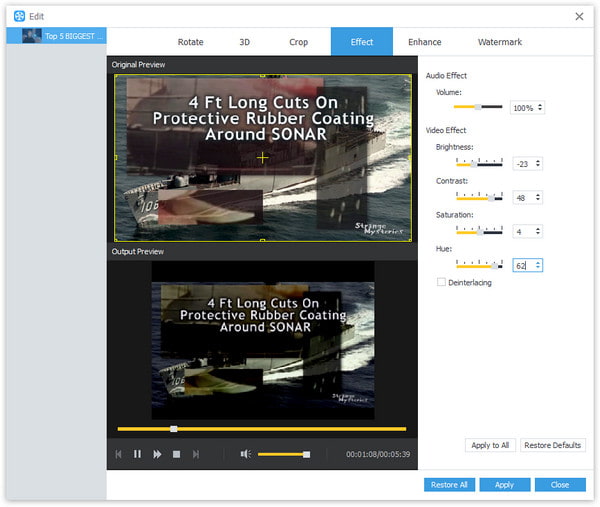
AVI is a subformat of the Resource Interchange File Format (RIFF), which divides a file's data into blocks, or "chunks." Each "chunk" is identified by a FourCC tag. An AVI file takes the form of a single "chunk" in a RIFF formatted file, which is then subdivided into two mandatory "chunks" and one optional "chunk". AVI files can contain both audio and video data in a file container that allows synchronous audio-with-video playback. Like the DVD video format, AVI files support multiple streaming audio and video, although these features are seldom used.
- - Wikimedia
H.264 or MPEG-4, Advanced Video Coding (MPEG-4 AVC) is a block-oriented motion-compensation-based video compression standard. As of 2014 it is one of the most commonly used formats for the recording, compression, and distribution of video content. It supports resolutions up to 8192×4320, including 8K UHD.
- - Wikimedia

Step 1. Download and install the program, then double click it to run it, and then you'll see the main interface of the program.

Step 2. Click "Add File(s)" button. Here you can select "Add Video" or "Add Folder" button to add files as you like.

Step 3. Click the drop-down arrow right beside the "Profile" column and select your desired video format from the drop-down list.

Step 4. Click "Edit" button to customize the output video like Effect, Trim, Crop, 3D Settings and Watermark.